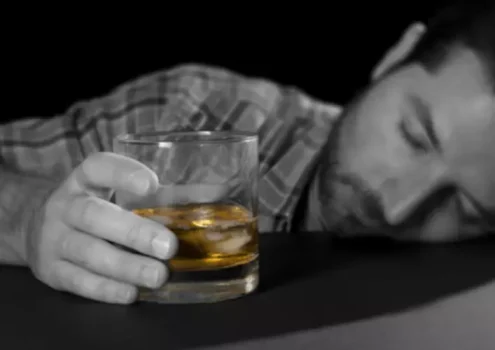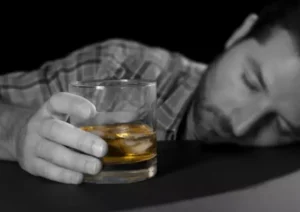
Menopause is a normal part of the aging process for women and refers to the stage when menstrual periods end, and they can no longer get pregnant, according to the National Institute on Aging. The average age of menopause is 51, but perimenopause typically starts eight to 10 years beforehand. Everyone is different—for some, going dry may only mean skipping that bottle of wine with dinner every few weeks, freeing up some $50 per month. However, for more regular, social drinkers, even a month off can save you upwards of $300.
Common Alcohol Withdrawal Symptoms
If alcohol is causing you to neglect responsibilities at work, home, or school, it’s a strong indicator that it might be time to reassess your drinking habits. Needing to drink more to achieve the same effect is a clear sign that your body is building a tolerance. This can lead to consuming larger amounts of alcohol, which increases the risk of addiction.
Does Everyone That Drinks Need an Alcohol Withdrawal Taper?

This what is alcoholism is why many choose an alcohol rehab programme for professional support. By the 12-hour mark, blood sugar levels may drop, leaving you dizzy or irritable. Some people struggle to sleep, while others experience nausea or mild hallucinations. As your body works to restore balance, symptoms can feel unpredictable. Alcohol withdrawal happens when the body, which has become used to regular alcohol intake, struggles to adjust after drinking suddenly stops. Over time, alcohol affects the brain’s neurotransmitters, especially gamma-aminobutyric acid (GABA), which helps calm the nervous system.
Should I attempt alcohol withdrawal alone?
A neuroscience-backed treatment using naltrexone, proven to help most people reduce their drinking. Thrive helps you take control of alcohol through naltrexone and the Sinclair Method, combining neuroscience and behavior change to transform your drinking habits for good. Xenia Ellenbogen (she/they) is a journalist specializing in health, mental health, and wellness.
- Many people feel tired when they stop drinking, whether that means after a night of over-indulging or in the early days of sobriety.
- Drinking alcohol while taking Ozempic® can interfere with blood sugar control, potentially increase certain side effects, and raise your risk of serious health complications.
- Many people enjoy the occasional beer or cocktail with friends and generally do not experience negative consequences.
- This huge change in lifespan is due to the numerous medical problems that alcohol can cause.
Alcohol suppresses glutamate and enhances GABA, making the body more relaxed. If you experience any symptoms of dependence, once you stop or cut back your drinking, you might need specialist treatment or ongoing support to prevent going back to heavy drinking. Happy hour can be a tasty way to relax after a long day, but alcohol can interact with your medicines and overindulging can take a toll on both your physical and mental health. If you’re considering cutting back, check out this article from The Conversation about how to make it work for you. If you or a loved one is suffering from an alcohol use disorder, it can feel like being trapped in a tunnel with no way out. Our admissions specialists will help you find the facility and treatment program best suited to the recovery needs of you or your loved one.
If you use more than that, cutting back or quitting may lower your blood pressure, levels of fat called triglycerides, and chances of heart failure. If a physician determines that you’re at risk for severe withdrawal, it’s important that you get the appropriate care so that you can be monitored and evaluated during your withdrawal. Treatment may take place cutting back on alcohol symptoms at a hospital or at an inpatient detox center. There are also some medication options prescribed by doctors that may help with symptoms. Cutting back or cutting out alcohol is an amazing choice you can make for your health and lifestyle. As a therapist that helps people stop drinking, I often hear from clients that they want to make a change, but are intimidated by the potential of experiencing withdrawal symptoms.

Quitting Alcohol Timeline

These signs were part of my daily life for years, and I just brushed them off as hangovers, lack of sleep, or too much alcohol. In reality, my body was struggling to cope after years of heavy drinking––going into overdrive to rebalance itself. Here’s what was actually happening to my body when I experienced these symptoms—and what your body might be trying to tell you if you’ve been overdrinking. Alcohol withdrawal symptoms typically begin within 6 to 12 hours after the last drink, although this can vary depending on the person’s drinking habits and level of dependence.
Social Networks
Night sweats became so normal for me that it was almost part of my middle-of-the-night routine to get up and change my clothes. This happens because alcohol messes with your autonomic nervous system, which controls body temperature and sweating. When you drink heavily, your body adjusts to the constant presence of alcohol, and when it’s suddenly gone, your nervous system goes into overdrive. Sweating is your body’s way of trying to cool itself down and release the built-up stress, but it’s really a sign of how much the system is struggling to cope without alcohol. If you start to experience any of the following symptoms, seek medical attention immediately.
